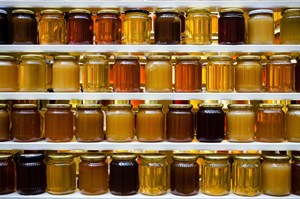Sign up to be notified of our new blog posts.
Six Tips for Food Manufacturers Purchasing Their First Mixing Vessel
Posted on November 29, 2023

For food manufacturers making the leap from small or shared-space production to expanded commercial production, processing equipment considerations can be overwhelming.
Not only is there a wide range of styles, features and options to understand, but the risk of choosing the wrong mixing vessel can be significant, with the potential to affect product quality and consistency, production efficiency and operating costs.
Having worked closely with food manufacturers for more than 100 years, we’ve gleaned some valuable insights to help processors as they set out to purchase their first vessel.
Based on that, here are six important tips:
Tip #1 - Fully consider product traits
The first and most important factor to consider when buying a mixing vessel relates to the characteristics of the product you are making. Your product’s ingredients, miscibility, viscosity and desired texture all impact decisions on vessel and agitation styles. Moreover, if you are going to produce multiple products using the same vessel, its design must be flexible enough to allow you to do so efficiently.
Tip #2 - Think holistically before choosing size and capacity
When choosing the size of your mixing vessel you must, of course, match your production volume goals. But other factors are also important, as a properly sized vessel can improve production efficiency and reduce waste and downtime.
For example, a small vessel can require frequent batch changes, cleaning cycles and additional staff needs. A large vessel may not achieve optimal mixing and heating conditions, leading to product inconsistency and energy loss, or it may not fit properly in your production facility, causing operational and maintenance issues.
A processing vessel should be sized according to your expected batch size, production rate, product characteristics and facility infrastructure.
Tip #3 - Evaluate the vendor's reputation and service
For food processors, a mixing vessel is a mission-critical long-term investment. To serve you well, it requires strong craftsmanship and regular maintenance and support.
It is definitely a purchase that adheres to the adage “penny-wise, pound-foolish”, as a vendor that offers low-quality products, poor customer service or inadequate after-sales support can cause headaches and losses for you.
A vendor that has a good reputation, industry experience, and technical expertise can be an important partner to help you reach your goals—both now and into the future. Be sure to research the vendor's background, references, and reviews before making a purchase decision.
Tip #4 - Understand the impact of available options and features
A mixing vessel can be customized with a range of elements that enhance its performance and functionality in your production environment.
From options for vessel and agitation style to those for sensors and surface finish, the variations can make a big difference in your overall operational performance.
You should fully understand how the different options and features offered by different vendors can affect your operation so that you can make ROI-based budget decisions.
Tip #5 - Factor in plans for future growth
A mixing vessel is a significant investment that should last for many years. However, your production needs may change over time due to market demand, distribution opportunities or product innovations.A vessel with a limited capacity, inadequate agitation system or inefficient cleaning requirements can quickly become obsolete or insufficient.
You should look for a mixing vessel that has the potential for scalability, modularity, or flexibility to accommodate your future growth.
Tip #6 - Get an applications engineer involved early
Applications engineers trained and experienced in the food manufacturing industry can play an enormously important role in helping you make the right equipment decisions. You will be well-served by getting an applications engineer involved early in your specifications process, to make sure you get equipment built around your product, your infrastructure and your production goals.
Purchasing your first commercial mixing vessel is a big step. By putting these insights into action—and finding the right support team to help—you can take that step, knowing you’ve set your operation on the path to success.
Need more help? If you are looking to scale up your food processing operation, our applications engineers would be happy to discuss your situation. Just contact us to get started.
Last Updated: 11/14/2025
Comments
Add Your Own Comment